A Pox On You All
The Pest House, Durham
September 2023
While a lot of what I uncover and research and seek and find in Connecticut is a solo effort, sometimes that’s just not good enough. So I very much appreciate when helpful readers come to my aid.
(Allow me to take a moment to lament the death of Twitter. From 2009 until Musk’s takeover, it was usually pretty great and allowed me to ask questions and get helpful answers – a great source for stuff like what follows on this page.)
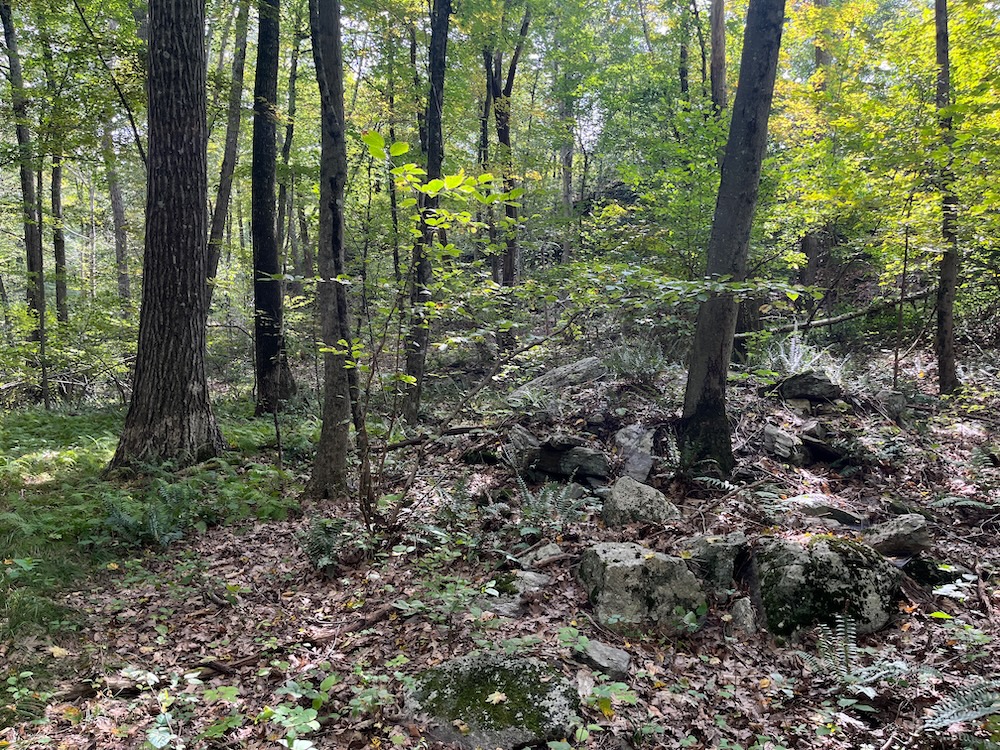
This is it. This is what this page is about. Exciting stuff.
There’s no way I would have found Durham’s Pest House remains if not for Tom. I forget which Tom sent me the detailed directions, but it was many years before I finally “got out there” and got hiking. In that time, the “clear” old woods road has become much less clear.
I’m not going to share the full directions here, as I’m not sure this is all public property. In fact, a 1999 Hartford Courant article pretty much confirms that:
But the land, where the bodies of Durham’s smallpox victims were buried, remains largely undisturbed. That is what the town is hoping to buy back as part of a $500,000 deal that also includes the purchase of 74 acres on Pisgah Mountain.
The mountain, offering vistas from 644 feet that extend all the way to Long Island Sound and Hartford, has long been an open space target of town officials.
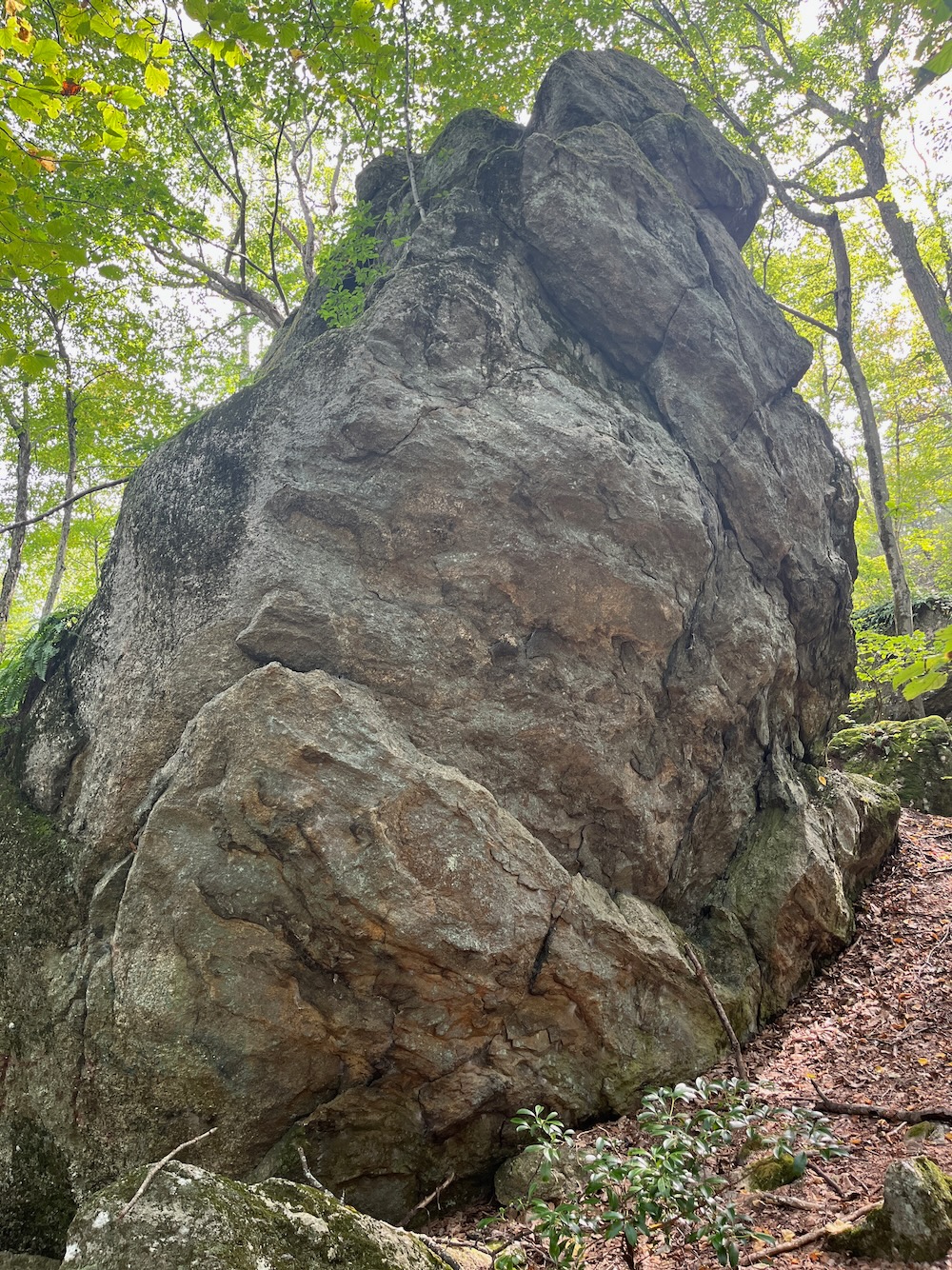
Pyramid Rock
But the Pest House property, located to the northwest of the mountain off Cream Pot Road, is one of the town’s more interesting, and solemn, historical treasures.
…
The town sold the land in the late 1840s, so there hasn’t been much opportunity to investigate the property — something the town would immediately gain if it purchased the house. Korn said the foundation of the house remains, as does the well.
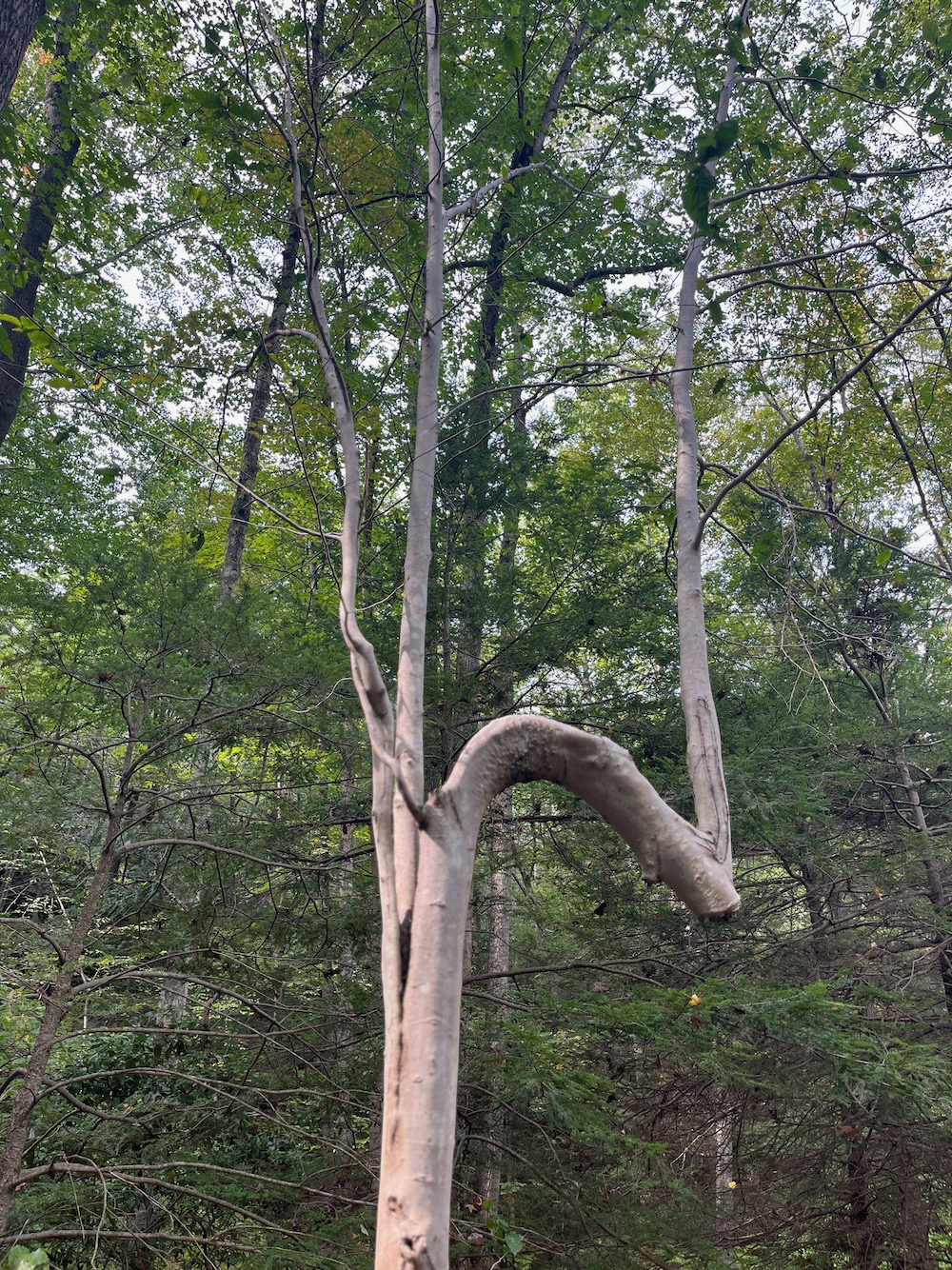
The town was working on this at the turn of the most recent century, so maybe it is public land now? I’ll get back to that later. Because I’m sure more than a few of you are wondering what I’m even talking about, let alone why it’s important or at the very least, interesting, to go traipsing through swamps and over hills to look for it.
Pest Houses existed in the mid to late 1760’s as quarantine centers for smallpox victims. Durham’s was built in 1760 after an outbreak in 1759 in town killed an entire local family. There was no known cure at the time, but they knew to isolate those infected.
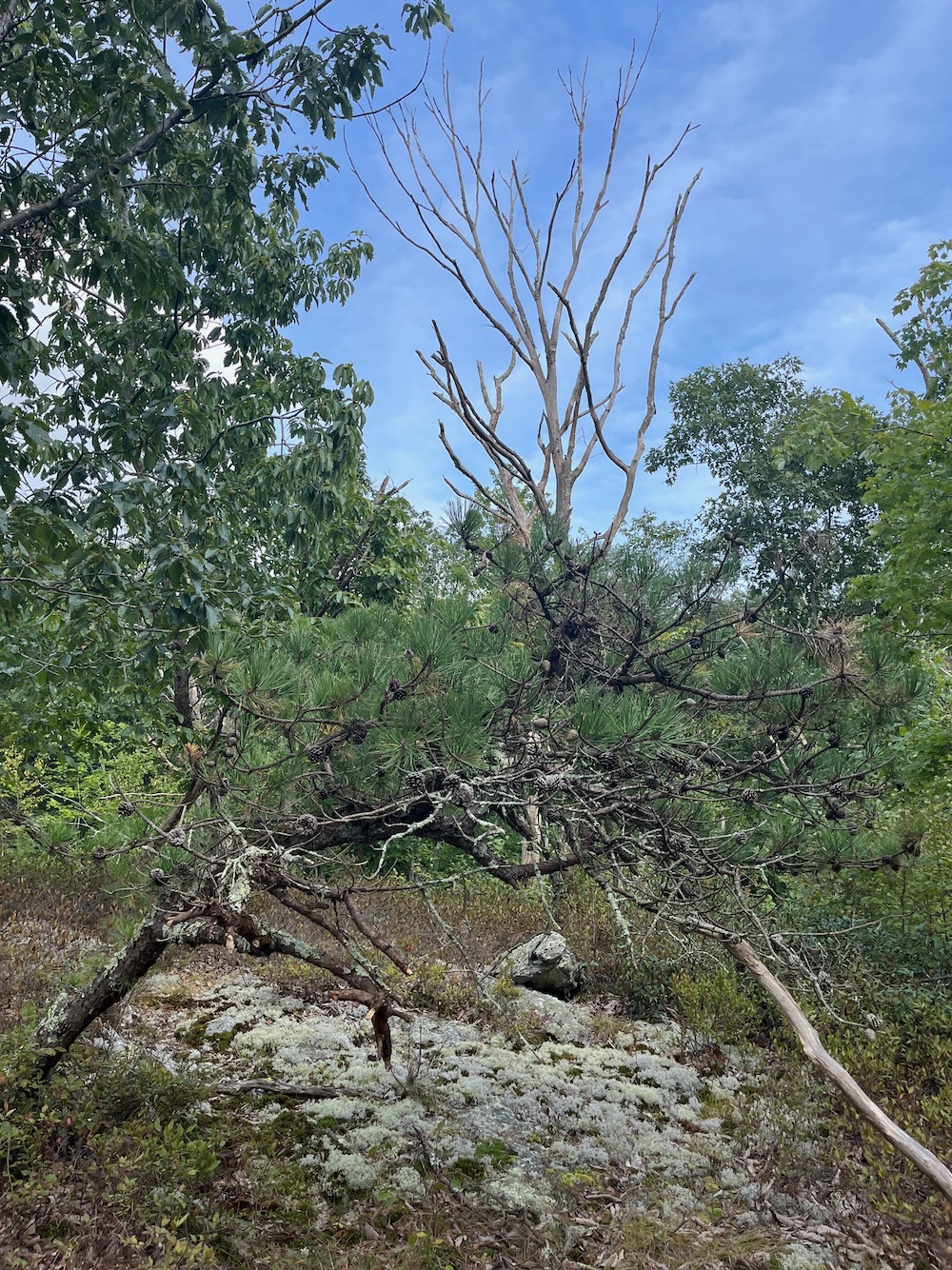
You’ve no need to be on top of a little hill like me
Before the discovery of the smallpox vaccination in 1798, entire communities could be quickly decimated. The disease spread by physical contact with the infected’s open sores or contaminated clothing and bedding. The disease’s wheezing cough made airborne transmission possible, too. So, infected persons were seen as an immediate threat to the community.
Located northwest of Pisgah Mountain near Cream Pot Road, a simple clapboard structure was constructed measuring 20-feet wide and 30-feet long with a fireplace and well. The Pest House served the town until the 1790s, and records indicate that during its operation 31 people with the disease were buried in the area, away from official town cemeteries. Currently, only one gravestone remains to mark the history of smallpox in Durham: that of Timothy Hall who died in July 29, 1775.
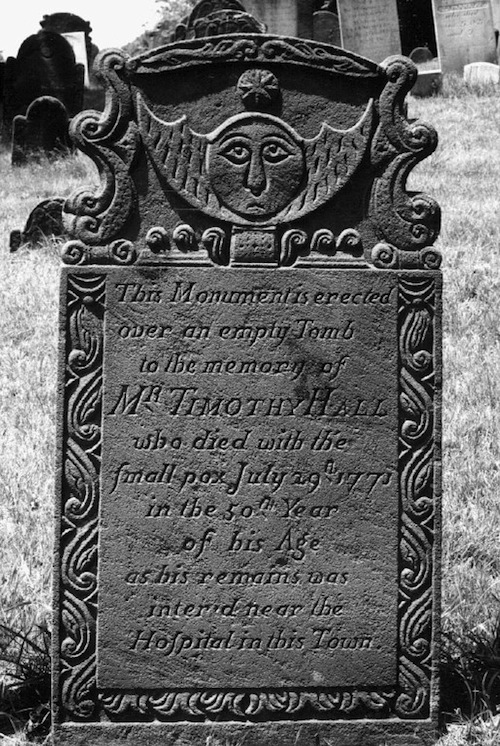
Picture from Connecticut History (This is at a cemetery, not in the middle of the woods.)
Today, the remains of the house and attendant cemetery are quite noticeable – as long as you are looking for it. The house, a 20-by-30-foot wooden structure with a cellar, fireplace and well, was used for the 30 years as the highly contagious virus characterized by fever, chills, nausea and a boiling rash swept through Connecticut, killing 25 percent of its victims.
Records show that 31 people were buried near the house.
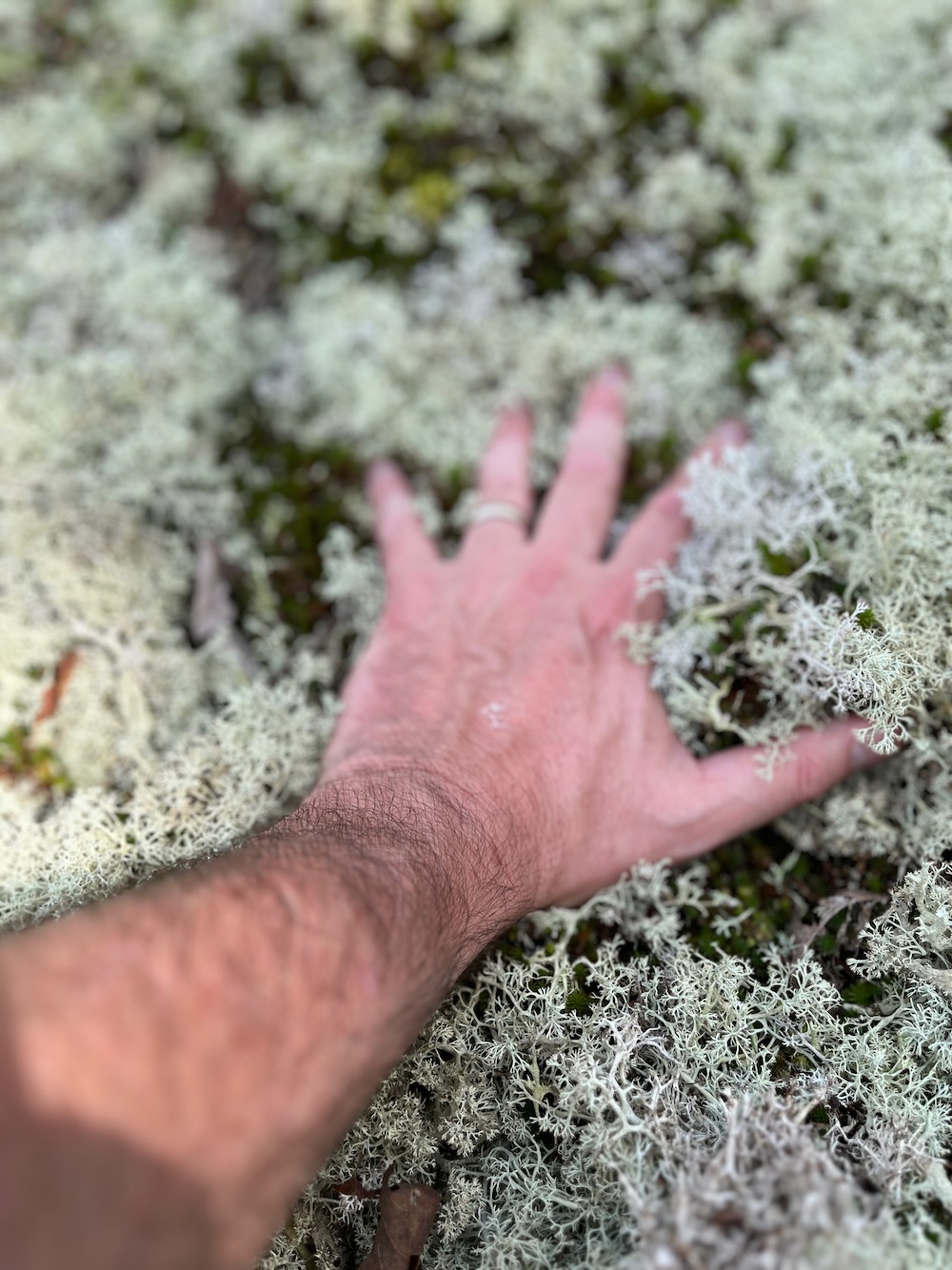
You’ve no need to feel this lush moss
So yeah, it’s a little creepy too. This structure only existed for disease and death. Let’s find it!
As noted above, it’s actually quite near Cream Pot Hill Road in Durham. But it’s behind a house, yard, and fence. Please don’t trespass – this is a rural part of a rural town. Enough said.
Drive to the end of Cream Pot and park where all the Mattabesett Trail hikers park. Walk down the gated-off road and take a right onto the Mattabessett. Hike a couple minutes to Pyramid Rock. Admire Pyramid Rock and cross your fingers that you’ll see it again in 20 or 30 minutes.
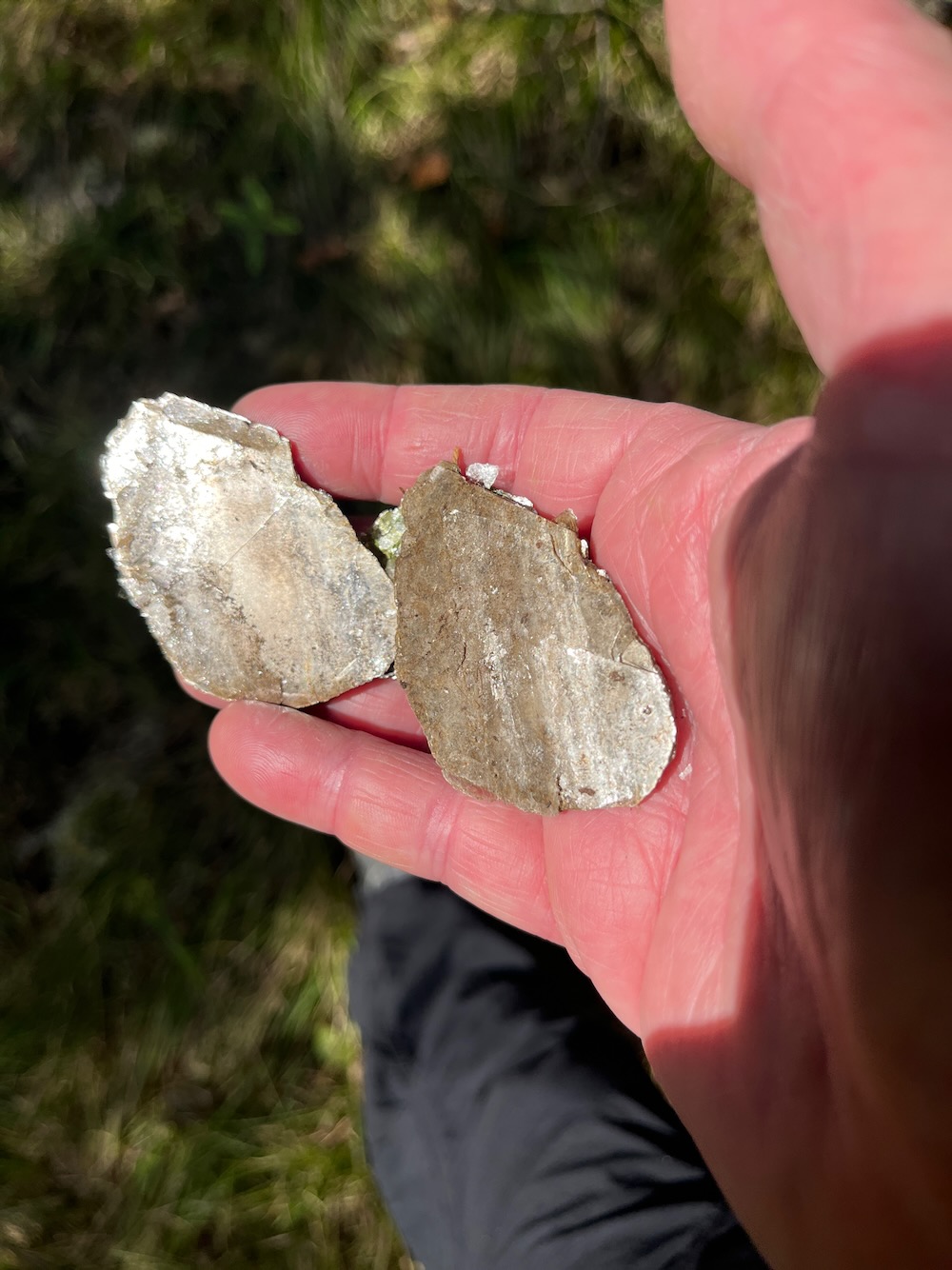
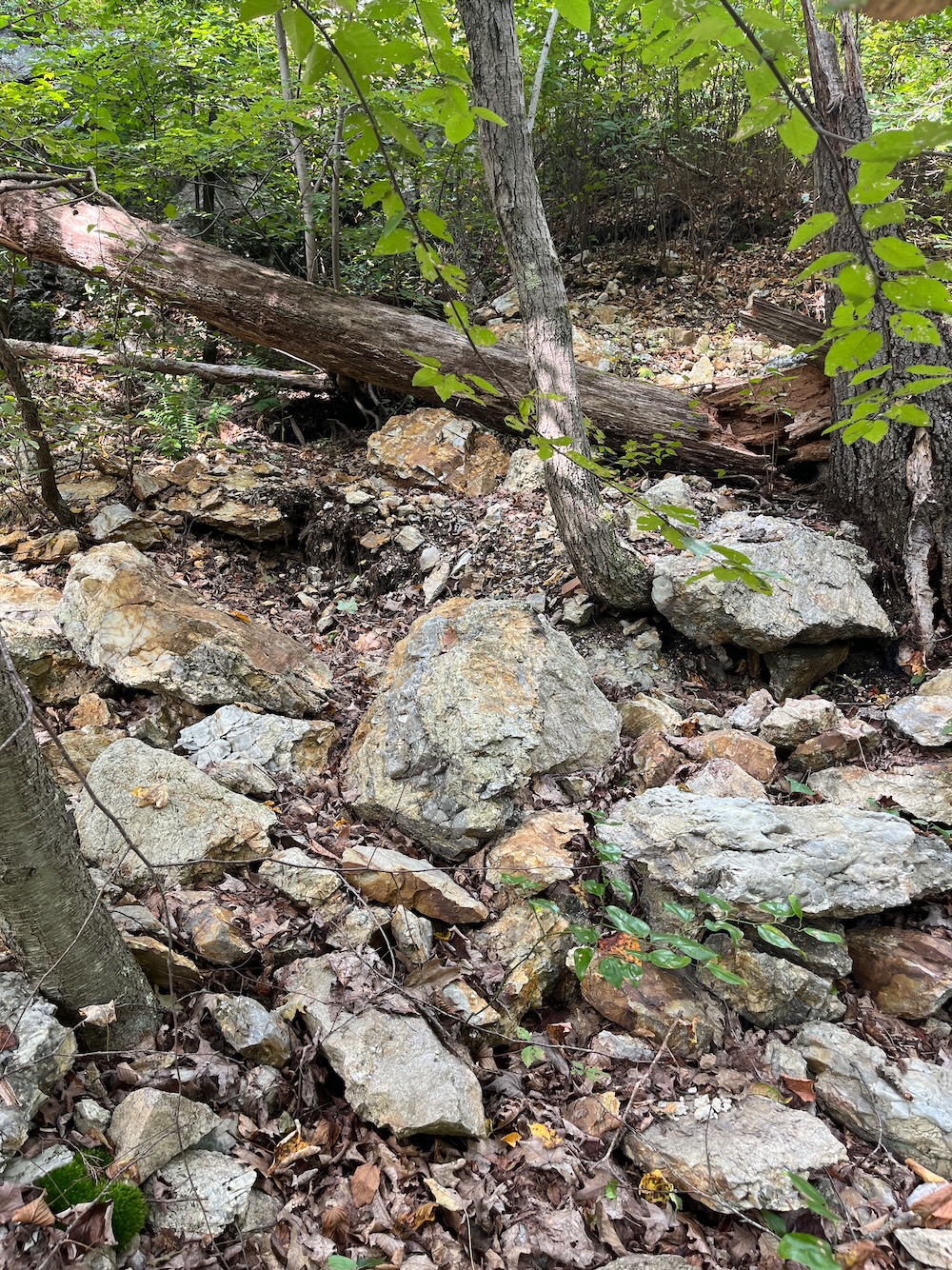
You’ve no need to find this old mica mine
Plunge into the woods opposite the red trail and head north northeast. Skirt a swamp, do not scale the steep incline to your left. Sort of head back towards Cream Pot. I found and followed a herd path and some deer trails.
I found myself on top of a prominent knoll covered the the lushest moss I’ve ever seen. It is several inches thick! But you have no reason to find this place, as it’s west of what you’re looking for – plus it requires army crawling under some seriously thick laurel.
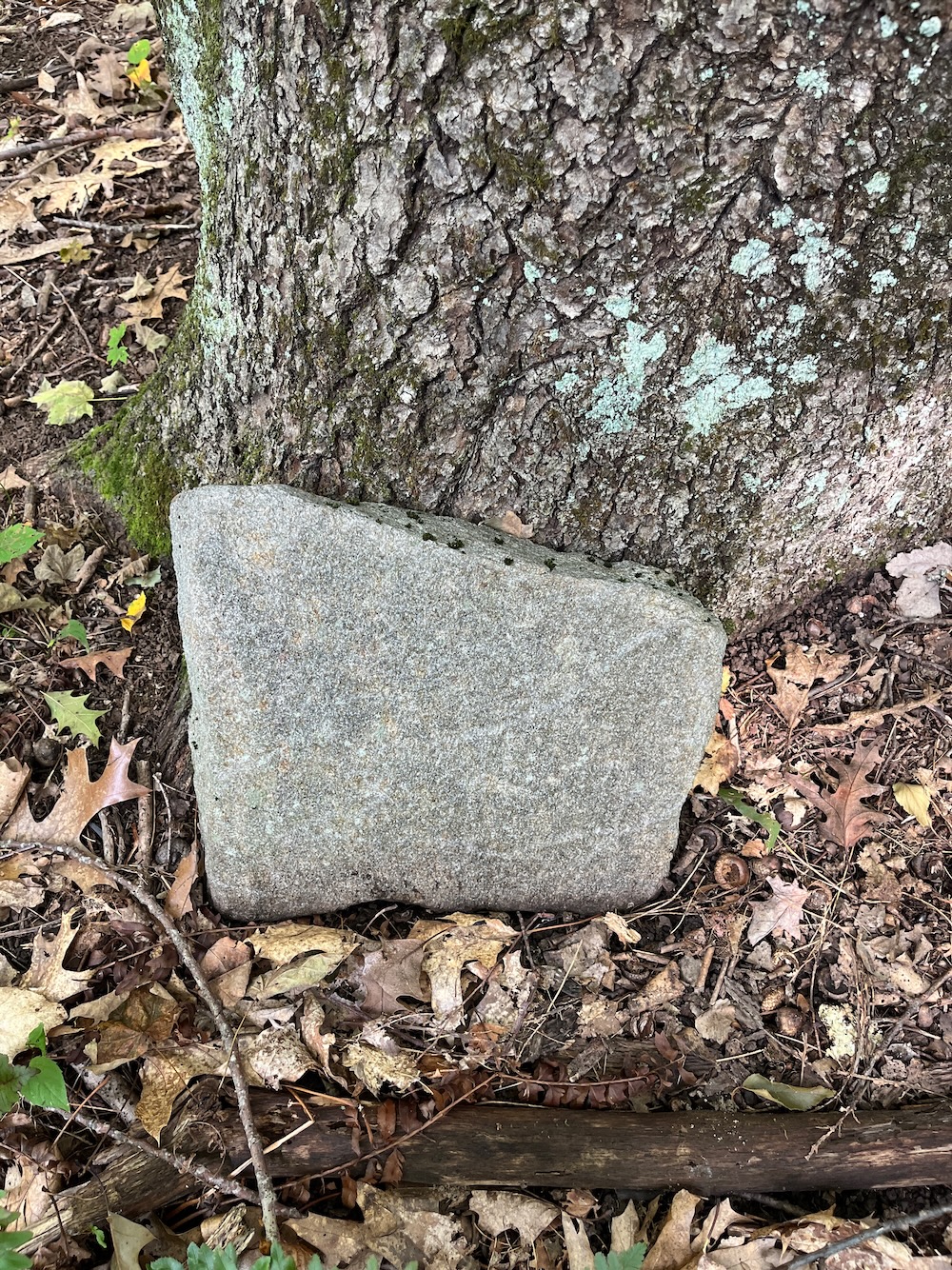
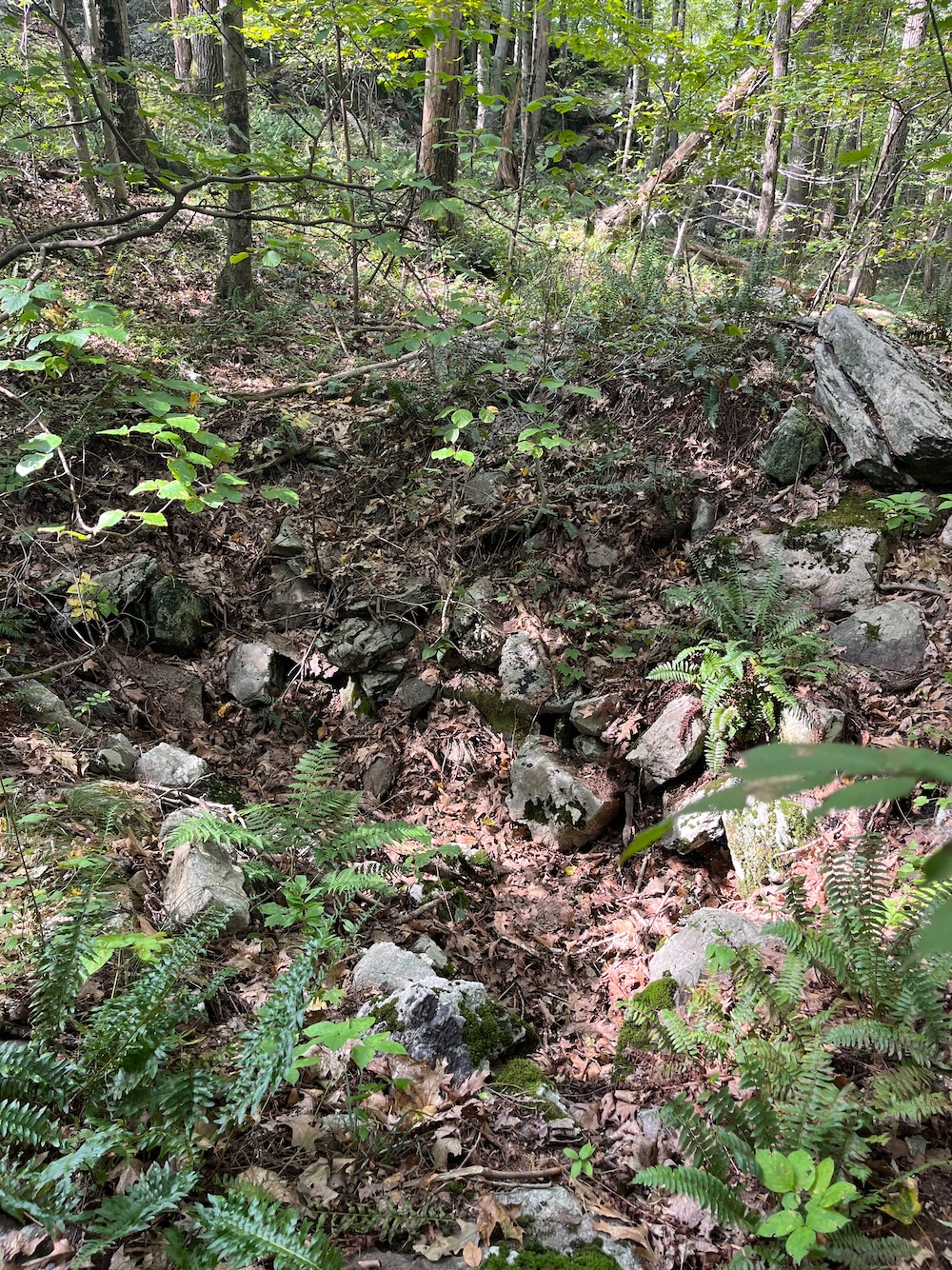
BUT! But it also took me to a large mica deposit. The Mica Ledges are just south of here and it’s a really cool area. We’ve all found mica in our lives, but to see massive chunks of it is pretty cool. There’s a saddle near here and to the northeast I found the Pest House remains.
There is one small and faded tombstone, a small foundation hole flanked by piles of stones, and the remains of the well down close to where things get swampy. And you can see the back of a house here as well. Once you find it, you know what it is – and it’s kind of crazy that it’s not protected or really noted anywhere. There aren’t too many of these places left in Connecticut, so I hope the town of Durham does own it and I hope it is handled with care at some point.
I made my way back to Pyramid Rock pretty quickly and went on to hike the Mica Ledges Preserve’s trails which took me into Madison. Coupled with that hike, this was an excellent time out in the woods.
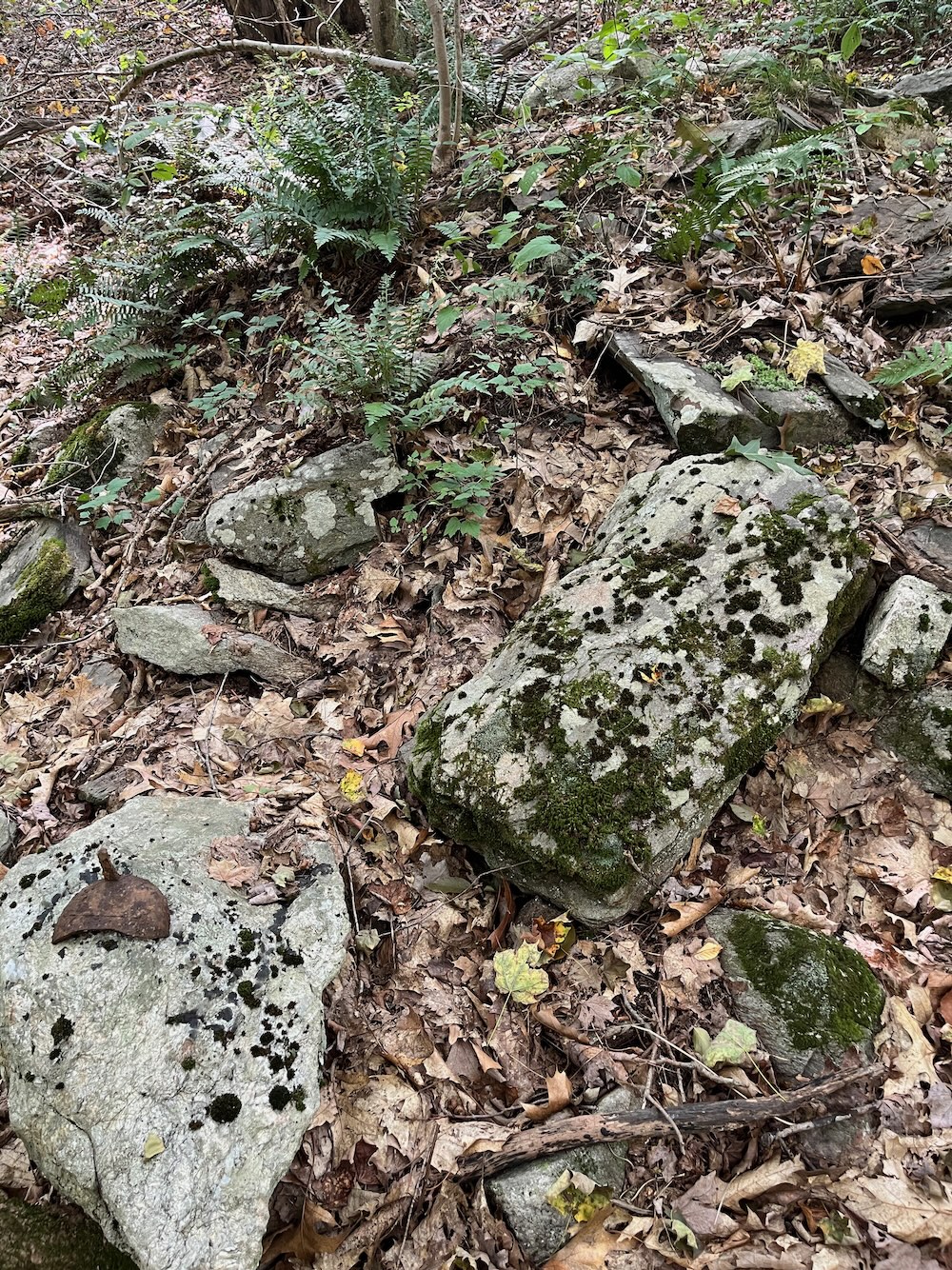
![]()
CTMQ’s Houses, Ruins, Communities & Urban Legends

 Kh says
Kh says
November 15, 2023 at 7:14 amSo intriguing – thanks
 Dan says
Dan says
December 24, 2023 at 10:50 amTempting. I really like lush moss. ;)